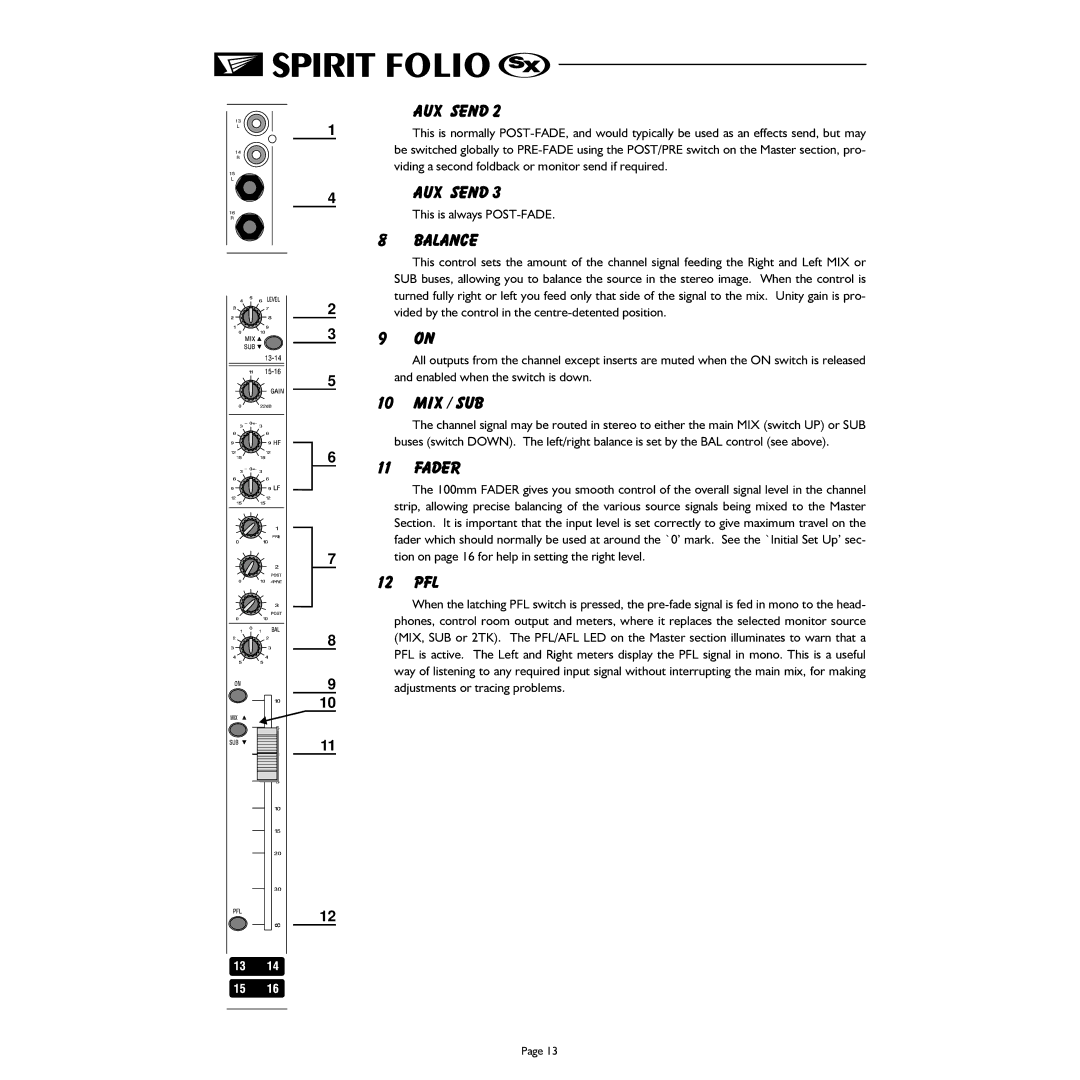
1
4
2
3
5
6
7
8
9
10
11
12
AUX SEND 2
This is normally
AUX SEND 3
This is always
8BALANCE
This control sets the amount of the channel signal feeding the Right and Left MIX or SUB buses, allowing you to balance the source in the stereo image. When the control is turned fully right or left you feed only that side of the signal to the mix. Unity gain is pro- vided by the control in the
9ON
All outputs from the channel except inserts are muted when the ON switch is released and enabled when the switch is down.
10 MIX / SUB
The channel signal may be routed in stereo to either the main MIX (switch UP) or SUB buses (switch DOWN). The left/right balance is set by the BAL control (see above).
11 FADER
The 100mm FADER gives you smooth control of the overall signal level in the channel strip, allowing precise balancing of the various source signals being mixed to the Master Section. It is important that the input level is set correctly to give maximum travel on the fader which should normally be used at around the `0’ mark. See the `Initial Set Up’ sec- tion on page 16 for help in setting the right level.
12 PFL
When the latching PFL switch is pressed, the
Page 13
